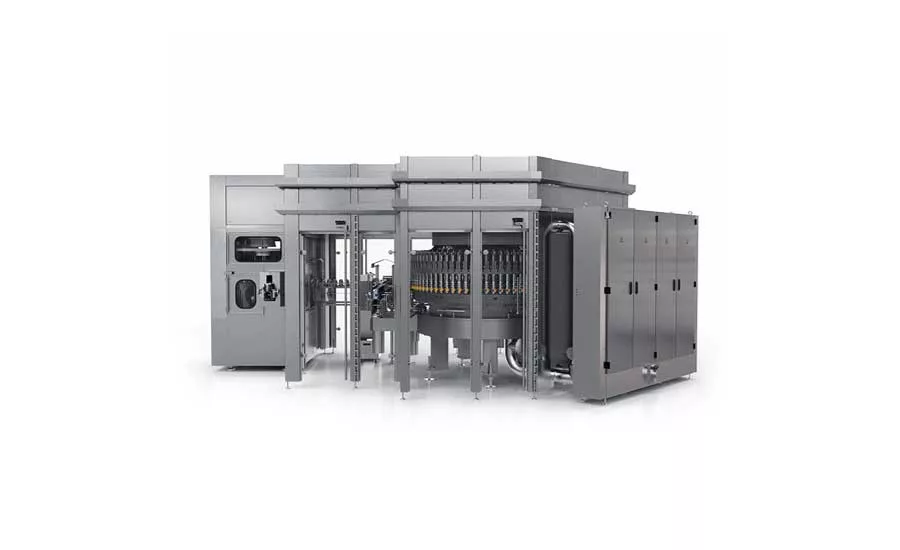Packaging Equipment
Demand for can packaging impacts filling, seaming equipment

In the book, “The Little Engine that Could,” the fictional train is known for his optimism and perseverance as he says “I think I can, I think I can” while going up the steep hill. As beverage-makers look to play a proactive role in the future of sustainable packaging, decision-makers are saying, “I think I can, I think I can.”
“The negative image that PET has encountered has pushed some beverage manufacturers from PET to cans,” says Barry Fenske, product sales of filling for Krones Inc., Franklin, Wis. “[Also, there is] the environmental friendliness of cans versus glass — can’t take glass to the beach. These trends are creating the need for more canning equipment.”
A recent KHS press release also highlights the beverage categories that are fueling the aluminum can movement.
“Consumers have appreciated the advantages of the beverage can for decades yet, just recently, the market share for cans has again shown a marked increase,” the release says. “There are numerous reasons for this. On the one hand, more and more energy drinks are being sold in cans; on the other, the craft movement is pushing this development by increasingly filling soft drinks, hard seltzer, beer and cider into this format.”
Another beverage market trend contributing to the increased demand for the canning market has been the proliferation of SKUs. This has resulted in beverage-makers requesting can filling and seaming equipment that support more flexible production lines.
“[SKU proliferation has] created more of a need for flexibility — flexibility in can sizes, can diameters, lid diameters, [and] the handling of different product types,” Krones’ Fenske says. “To be able to fill products that are carbonated, non-carbonated, cold-fill, hot-fill, pulpy, oxygen sensitive, non-oxygen sensitive. As a result of so many beverages moving into aluminum cans, you see more and more can filling co-packers increase their capabilities. Also, brand new co-packing companies are emerging, and co-packers need flexibility.”
Tooled for today
As beverage formulations and packaging evolve, original equipment manufacturers (OEMs) are designing equipment that support this production environment.
Fenske explains that the variance of packaging sizes has prompted OEMs to develop can filling equipment that can adapt to fast changeovers.
“[T]he focus has been on shortening those times, whether it be tool-less handling parts and/or programming enhancements,” he says.
Krones offers the Modulfill Bloc FS-C, which processes beer, carbonated soft drinks, water, hot-filled juice and non-carbonated beverages. With the ability to fill and cap 135,000 cans an hour, the Modulfill Bloc FS-C supports quick changeovers, the company says.
“Height adjustment is fully automatic, quick-change handling parts keep changeover times short and the combined centering bell can even be used for several can formats,” Fenske explains.
Another important aspect of beverage production is ensuring the safety and efficacy of the packaged products. With quality control continuing to evolve, canning and seaming equipment OEMs are arming their portfolio with the latest, most innovative technologies.
“[Quality control] is driving equipment manufacturers to focus more on hygiene, [such as] eliminating flat surfaces that tend to pool water/product, adding HEPA filtration around the filler/seamer bloc itself, adding automatic foaming systems for cleaning the bloc’s exterior,” Fenske explains..
Additionally, Fenske says that having a multitude of clean-in-place (CIP) programs to choose from that are specific to the product that was run is influencing canning and seaming equipment
Krones’ Modulfill Bloc FS-C supports this need state with the entire block featuring a hygienic design without tabletop, Fenske says. It also can be directly connected to Krones CIP and foam-cleaning systems, he adds.
Dortmund, Germany-based KHS also is prioritizing hygienic designs with its Innofill Can DVD and its compact Innofill Can C can filler.
“Both machines offer many advantages and set standards — in hygiene, for example, thanks to the reduced cleaning effort; the extremely hygienic design and elimination of water lubrication in the filler carousel area prevent the open cans from being soiled,” the company states in a press release. “This allows cleaning intervals for exterior cleaning to be lengthened.”
For the Innofill Can DVD, one of the important upgrades in terms of hygiene was the pneumatic lowering device for the centering bells, the company says. This eliminates the mechanical movement by rollers and cans.
“With this system, we reduce the number of fittings on the valve,” said Manfred Härtel, filling product manager at KHS, in a statement. “On a filler, the rollers especially are subject to heavy wear. This means that a certain amount of abrasion can be caused above the open cans. With this now no longer an issue in the future, we’ve managed to again considerably increase what was already a very high level of hygiene.”
As more beverage-makers turn to aluminum cans for their packaging needs, Krones’ Fenske prognosticates that the can filling equipment will experience the same demands. “Simply put, [it will result in] increased demand for both equipment and the cans themselves,” he concludes.
Looking for a reprint of this article?
From high-res PDFs to custom plaques, order your copy today!





